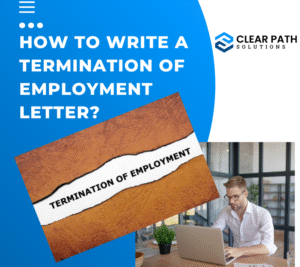Writing a reference for an employee is a common HR task that. Whether you’re an HR professional, manager, or former employer, crafting a thoughtful and accurate reference can impact someone’s career trajectory.
A good reference can help a former employee secure a new opportunity, while a vague or poorly written one might do the opposite—or even open the door to legal risk for the employer.
In the UK, while there’s generally no legal obligation to provide a reference (except in specific industries like financial services), if you choose to do so, it must be fair, accurate, and not misleading.
With this in mind, this guide will walk you through everything you need to know about how to write an effective employee reference—from structure and content to legal considerations and best practices.
Why Employee References Matter?
An employee reference serves as an endorsement of an individual’s skills, performance, and conduct during their employment. Employers often request references to validate a candidate’s experience, reliability, and workplace behaviour.
On the other hand, from employer’s perspective your reference acts as a reflection of your organisation’s professionalism and integrity.
References can be:
Basic factual references – confirming job title, dates of employment, and possibly salary.
Detailed personal references – offering insights into the employee’s skills, character, and suitability for the role they are applying for.
While some companies now opt for the safer route of providing only basic references, many employers still expect more in-depth evaluations—especially for senior roles or positions requiring high levels of trust.
Legal Considerations in the UK
When writing a reference, it’s essential to understand the legal context:
- It must be accurate and fair – UK law doesn’t require an employer to provide a reference, but if they do, it must be truthful and not misleading.
- Avoid discrimination – References must not include any discriminatory language or remarks related to protected characteristics (e.g., age, gender, race, disability).
- Duty of care – You owe a duty of care to both the subject of the reference and the recipient. Misleading or negligent references could result in legal action.
- Employee consent – Always obtain the employee’s consent before disclosing personal data in a reference. This aligns with data protection regulations under the UK GDPR(United Kingdom General Data Protection Regulation).
When in doubt, it’s wise to consult legal or HR professionals—especially if the reference concerns a contentious or disputed employment history.
What to Include in a Reference for an Employee?
A clear, concise, and well-structured reference is more effective and professional. Following elements are typically included in a comprehensive employee reference:
- Your Contact Information: At the top of the letter, include your name, job title, company name, address, email, and phone number. This lends credibility and makes it easy for the recipient to follow up if needed.
- Confirmation of Employment: Provide the employee’s job title, department, and the dates they worked for your organisation. Be accurate and stick to facts—don’t approximate unless necessary.
Example:
“I am writing to confirm that Jane Smith was employed by XYZ Ltd as a Marketing Executive from 5th March 2019 to 31st August 2023.”
- Job Responsibilities and Achievements: Briefly describe the employee’s main duties and responsibilities. Highlight any accomplishments, projects, or milestones that illustrate their competence and contribution.
Example:
“Jane was responsible for developing and executing multi-channel marketing campaigns. She led a rebranding project in 2021 that resulted in a 35% increase in online engagement.”
- Performance and Skills: Comment on the employee’s work ethic, reliability, problem-solving ability, communication skills, and overall performance. Be honest—only comment on areas you are confident about.
Example:
“Jane consistently met her performance targets and demonstrated strong strategic thinking and creativity. Her communication and collaboration skills were key assets to our team.”
- Conduct and Attitude: If relevant, mention the employee’s attitude, punctuality, teamwork, or professional behaviour. This is particularly useful for roles that involve trust and responsibility.
Example:
“Jane was a punctual, reliable, and professional member of staff who interacted positively with colleagues and clients alike.”
- Reason for Leaving (Optional): This is not essential, but you may include it if it was amicable or if requested by the employee.
Example:
“Jane left the company voluntarily to pursue a new opportunity in a senior marketing role.”
- Recommendation and Suitability: End with a statement summarising your recommendation and confidence in their suitability for the new role—if applicable.
Example:
“I have no hesitation in recommending Jane for any similar role in the marketing field. She would be an asset to any organisation.”
- Signature: Finish the letter with a formal closing, your signature, printed name, and job title.
Sample Reference Letter for an Employee
To Whom It May Concern,
I am writing to provide a reference for Jane Smith, who worked at XYZ Ltd as a Marketing Executive from 5th March 2019 to 31st August 2023.
During her time with us, Jane played a crucial role in leading marketing initiatives, managing key campaigns, and driving brand strategy. She was responsible for a company-wide rebranding project that significantly improved our market presence and digital engagement.
Jane is a highly motivated, creative, and dependable individual. She consistently demonstrated strong communication skills and was particularly effective at cross-functional collaboration. She was respected by her peers and often sought after for her strategic insight.
Jane left our organisation to explore a new opportunity aligned with her career growth. I am confident that she will bring the same level of excellence and professionalism to her next role.
If you require further information, please do not hesitate to contact me.
Yours sincerely,
Alex Johnson
HR Manager, XYZ Ltd
alex.johnson@xyz.com | 01234 567890
Points to Avoid in a Reference
While being honest is key, there are some clear pitfalls to avoid:
Personal opinions or unverified claims – Stick to what you know and can support.
Negative remarks without evidence – These could lead to defamation claims.
Inconsistent information – Ensure your reference aligns with internal records.
Discriminatory language – Be aware of wording that could be interpreted as biased or prejudiced.
If you feel uncomfortable giving a reference—for example, due to ongoing disputes—it’s usually best to provide a neutral factual reference instead.
Conclusion
Writing a reference for an employee should be considered a serious responsibility. Whether you’re providing reference for a top performer or simply confirming employment details, your words carry weight. A well-written reference not only helps a former employee transition successfully but also reflects positively on your organisation.
By following a clear structure, keeping the information factual and relevant, and understanding your legal obligations, you can craft a reference that is both helpful and compliant. It’s one more way that HR professionals and managers contribute to fair, ethical employment practices.
Need help drafting or standardising employee references at your company?
Clear Path Solutions can help you create clear, compliant, and effective reference letter templates that work for every situation.
Contact us today to schedule a free consultation or download our Employee Reference Toolkit to get started!





